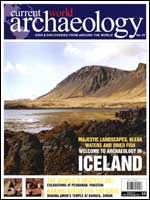 CWA 19 was published in October 2006 and contained features on the wide-ranging history of Gor Khuttree in the Khyber Pass, Kushite remains at Dangeil in the Sudan, the once highly developed city of Raqqa in Syria and also takes a look at the evolution of Iceland as an international trading hub.
CWA 19 was published in October 2006 and contained features on the wide-ranging history of Gor Khuttree in the Khyber Pass, Kushite remains at Dangeil in the Sudan, the once highly developed city of Raqqa in Syria and also takes a look at the evolution of Iceland as an international trading hub.
Pakistan
Peshawar at the entrance to the Khyber Pass is host to the site of Gor Khuttree which is arguable the deepest dig in the world. The site has a wide reaching history and it has been suggested that it was once the repository of Buddha’s begging bowl; before going through subsequent incarnations as a Buddhist monastery, Sikh mosque and Hindu temple. Current excavations take a holistic view of the site and are trying to explain the nature of the various levels of occupation, which range from the time of the Mauryan Emperor Ashoka, to the British colonial period. It is hoped that after this work is completed the site will become a World Heritage Monument.
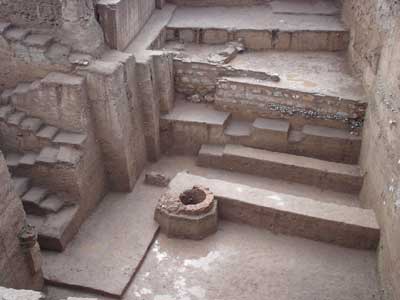
The finest remains come from the Kushan period, here the cleanly excavated diaper masonry can be see.
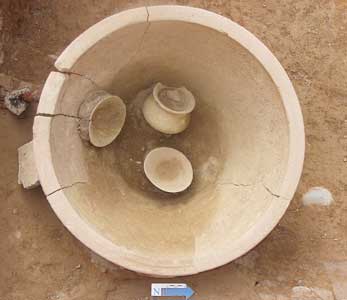
The Moghul dynasty bowl shows the early mastery of glaze work on the ceramics, coupled with this there was evidence of the early development of glass working techniques.
Sudan
As a neighbouring country to Egypt, home of one of the most inspiring and oldest civilisation in the world, the Sudan has been archaeologically overlooked to a certain extent. However, the modern city of Dangeil is home to one to an outstanding example of a late Kushite era city including the remains of a temple to the god Amun. With the help of archaeobotanical studies and stratigraphic analysis the current study is hoping to reveal the cause of the violent collapse of this civilisation in the 4th century BC and hence give this civilisation its due recognition.
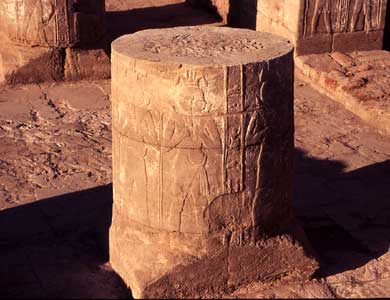
The similarities with the Ancient Egyptian cultures are striking, one need only look to their style of relief carving for evidence.
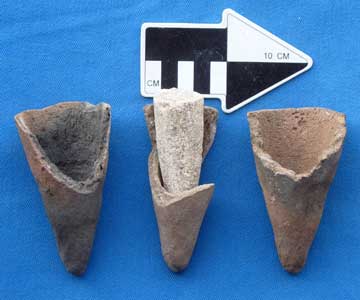
What was the role of the moulds for 77,000 loaves of bread that have been recovered from Dangeil?
Syria
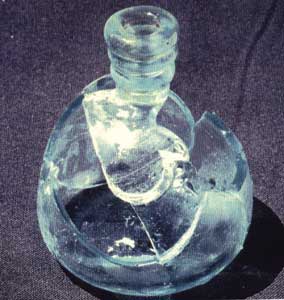 The ancient city of Raqqa in Syria, once the largest and most civilised city in the world, fell by the wayside following the relocation of Islamic leader Harun al-Rashid. The Mongul destruction of it in the 13th century caused to to be largely forgotten; finally a 20th century city is located over most of it now leading to its undeserved "unknown" status. However repeated seasons of digging from the early 1990s have revealed evidence of innovative and unusual glass and pottery working techniques; not to mention the burial evidence that may suggest the city was a proto-cosmopolitan melting pot.
The ancient city of Raqqa in Syria, once the largest and most civilised city in the world, fell by the wayside following the relocation of Islamic leader Harun al-Rashid. The Mongul destruction of it in the 13th century caused to to be largely forgotten; finally a 20th century city is located over most of it now leading to its undeserved "unknown" status. However repeated seasons of digging from the early 1990s have revealed evidence of innovative and unusual glass and pottery working techniques; not to mention the burial evidence that may suggest the city was a proto-cosmopolitan melting pot.
A desirable, colourless glass found at Raqqa exhibits the typical Islamic neck style.
Iceland
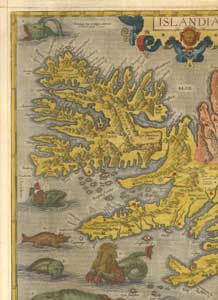 The 15th century saw a revolution in the trading patterns of Iceland, as a somewhat isolated island, trade had been largely localised and based around centuries old trading bases, but the influx of fishing and trade vessel from England then the rest of Europe marked the end of this tradition. The search for these new trading sites has taken a multi-disciplinary approach, with etymological place name study being used side-by-side with GPS surveying to build up a picture of a hub of early international trade.
The 15th century saw a revolution in the trading patterns of Iceland, as a somewhat isolated island, trade had been largely localised and based around centuries old trading bases, but the influx of fishing and trade vessel from England then the rest of Europe marked the end of this tradition. The search for these new trading sites has taken a multi-disciplinary approach, with etymological place name study being used side-by-side with GPS surveying to build up a picture of a hub of early international trade.
A 16th century map of Iceland, most of the international trade took place along the north west coastline – to avoid the sea monsters which inhabited the other bays perhaps?
